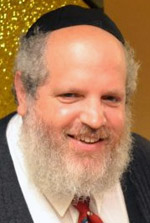Parashat Toldot (Generations)

CARLSBAD, California — This week’s Torah portion is titled ‘Toldot’, which means generations. The portion begins, “And these are the generations of Yitzchak the son of Avraham, Avraham gave birth to Yitzchak.” Not only does this wording seem redundant, but it is repeating itself. If Yitzchak is the son of Avraham, obviously Avraham gave birth to Yitzchak. What is the Torah trying to tell us here in addition to Yitzchak’s lineage?
Rashi, the great classical commentator, explains the background of why the strong emphasis. We previously learned that Sarah, who was beautiful, had been abducted by King of the Plishtim, Avimelech. Through divine intervention Avimelech was not able to touch Sarah. Realizing his mistake Avimelech lavished gifts on Sarah’s legitimate husband, Avraham, and sent them on their way. It was not long after that incident that Sarah conceived Yitzchak. This, of course, got the rumor mill going and people claimed that Avimelech, not Avraham, was Yitzchak’s biological father. Rashi explains that G-d made Yitzchak look very much like his father Avraham, so Yitzchak’s lineage could not be questioned.
Why is the fact that a son looked like his father noteworthy? Isn’t that natural and to be expected? The Rebbe, Rabbi Menachem Mendel Schneerson of blessed memory, offers an insightful explanation.
We look to our Patriarchs and Matriarchs for inspiration and for instruction in our daily lives. We find their powerful connection to the Almighty. We also see how they choose to serve the Creator in their own lives. Avraham was known for his lovingkindness. He excelled at bestowing love on others. He and Sarah continually hosted guests who they would feed lavishly. Avraham’s lovingkindness led to the idea that the divine attribute of kindness was ‘out of work’, so to speak, as long as Avraham’s career was active. Avraham scooped up all of the available opportunities to bestow acts of kindness on others.
Yitzchak, on the other hand, had a very different MO in serving G-d. Yitzchak was known for digging wells. How is a well dug? Dirt is removed, going deeper and deeper, until fresh water his found. The water then wells up and fills the hole (at least as high as the water table goes). This represents Yitzchak’s approach to divine service. If Avraham reached out Yitzchak looked inwardly. He focused on self-refinement achieving great personal spiritual heights.
This leads us to the answer of our question.
In Chasidic Philosophy we learn that this world mirrors the spiritual realms. Avraham’s divine service of being outgoing mirrored his spiritual composition just as Yitzchak’s inwardly focused approach mirrored his spiritual composition. Normally, one’s spiritual self would be reflected in his/her physical appearance. Therefore, the fact that even though they each had very different spiritual makeups they had similar visages is noteworthy.
But what does all of this have to do with us?
That, my friends, is quite simple. The Patriarchs and Matriarchs are our trailblazers. They not only showed us the correct path, but they gave us the ability to follow it, and, in fact, left us a legacy. This inner spark is part of our DNA. We inherited both Avraham’s ability to reach out to others and Yitzchak’s ability to refine oneself.
All we have to do is decide to act upon it and use these tremendous gifts!
Wishing everyone a happy and HEALTHY Shabbos!
*
Rabbi Yeruchem Eilfort is Director of Coastal Chabads and Chabad at La Costa. Rabbi Eilfort welcomes readers’ comments and questions and may be reached at RabbiE@ChabadatLaCosta.com.